A Brief History of Atomic Clocks at NIST
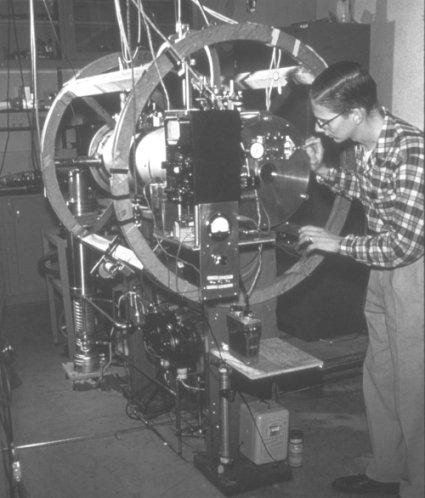
1945 -- Isidor Rabi, a physics professor at Columbia University, suggests a clock could be made from a technique he developed in the 1930's called atomic beam magnetic resonance.
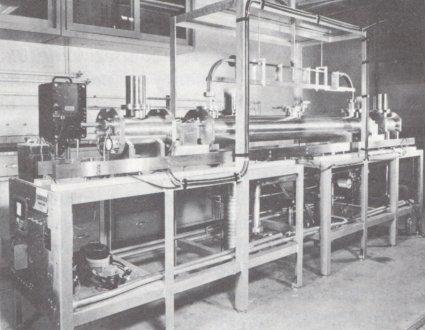
1949 -- Using Rabi's technique, NIST (then the National Bureau of Standards) announces the world's first atomic clock using the ammonia molecule as the source of vibrations.
1952 -- NIST completes the first accurate measurement of the frequency of the cesium clock resonance. The apparatus for this measurement is named NBS-1.
1954 -- NBS-1 is moved to NIST's new laboratories in Boulder, Colorado.
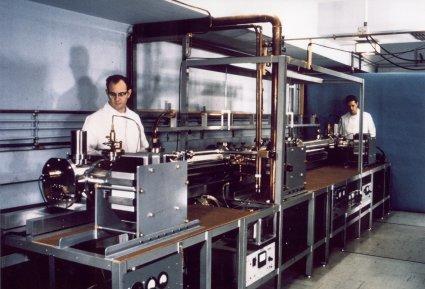
1955 --The National Physical Laboratory in England builds the first cesium-beam clock used as a calibration source.
1956 -- Commercial cesium clocks become available, costing $20,000 each.
1959 -- NBS-1 goes into regular service as NIST's primary frequency standard.
1960 -- NBS-2 is inaugurated in Boulder; it can run for long periods unattended and is used to calibrate secondary standards.
1963 -- The search for a clock with improved accuracy and stability results in NBS-3.
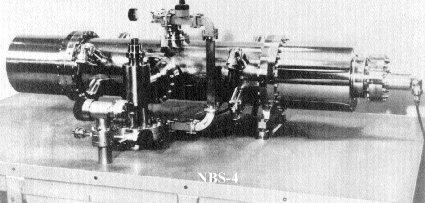
1967 -- The 13th General Conference on Weights and Measures defines the second on the basis of vibrations of the cesium atom; the world's timekeeping system no longer has an astronomical basis.
1968 -- NBS-4, the world's most stable cesium clock, is completed. This clock was used into the 1990s as part of the NIST time system.
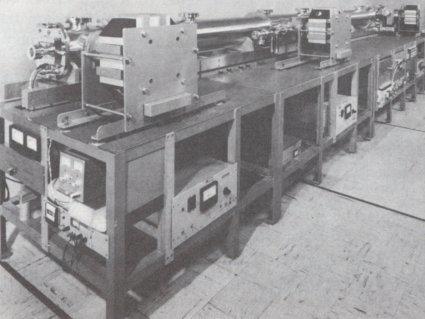
1972 -- NBS-5, an advanced cesium beam device, is completed and serves as the primary standard.
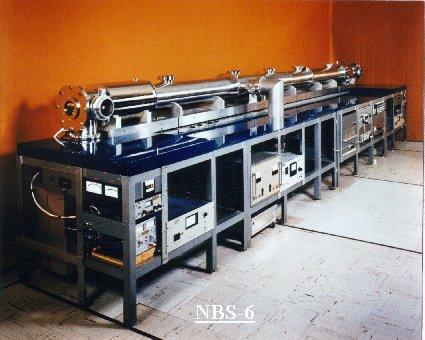
1975 -- NBS-6 begins operation; an outgrowth of NBS-5, it is one of the world's most accurate atomic clocks, neither gaining nor losing one second in 300,000 years.
1989 -- The Nobel Prize in Physics is awarded to three researchers -- Norman Ramsey of Harvard University, Hans Dehmelt of the University of Washington and Wolfgang Paul of the University of Bonn -- for their work in the development of atomic clocks. NIST's work is cited as advancing their earlier research.
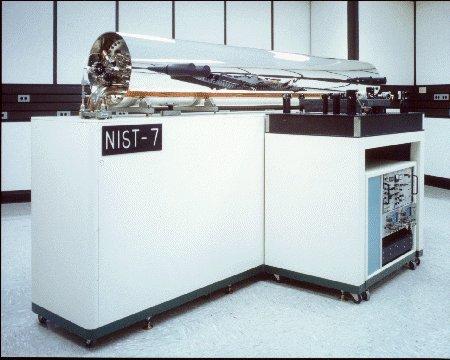
1993 -- NIST-7 comes on line; eventually, it achieves an uncertainty of 5 x 10-15, or 20 times more accurate than NBS-6.
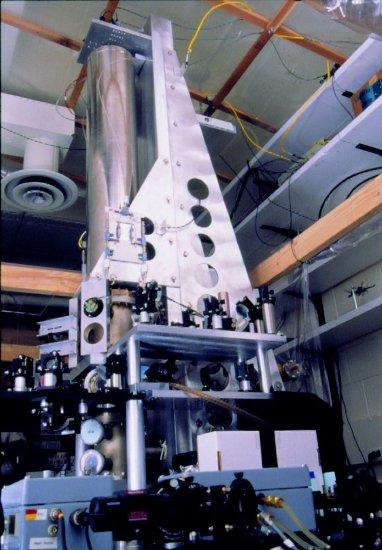
1999 -- NIST-F1 begins operation with an uncertainty of 1.7 x 10-15, or accuracy to about one second in 20 million years, making it one of the most accurate clocks ever made (a distinction shared with similar standards in France and Germany).
For more information, download NIST Primary Frequency Standards and the Realization of the SI Second. A detailed overview of the NIST Primary Frequency Standards. Includes historical information, a technical description of the devices, color photographs of the standards, and an extensive list of references. Published in December 2007. 17 pages.

